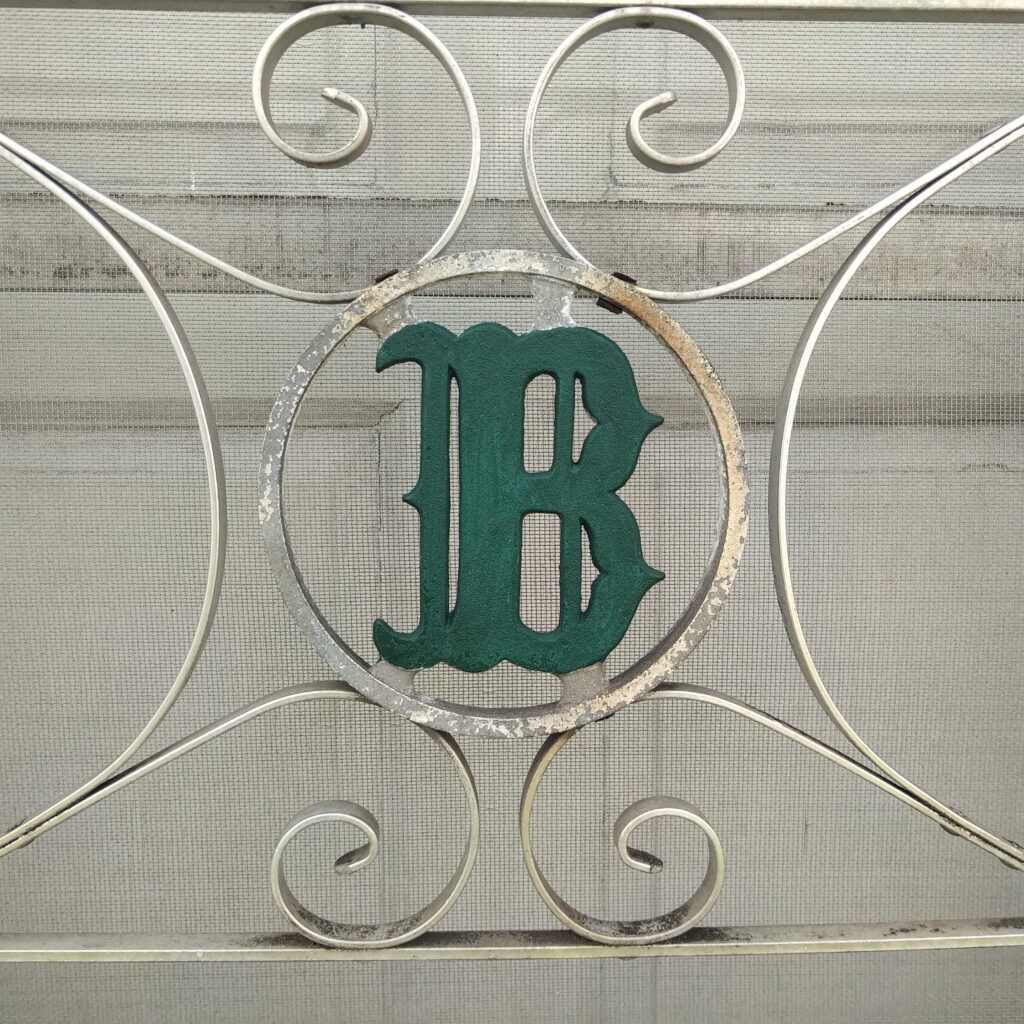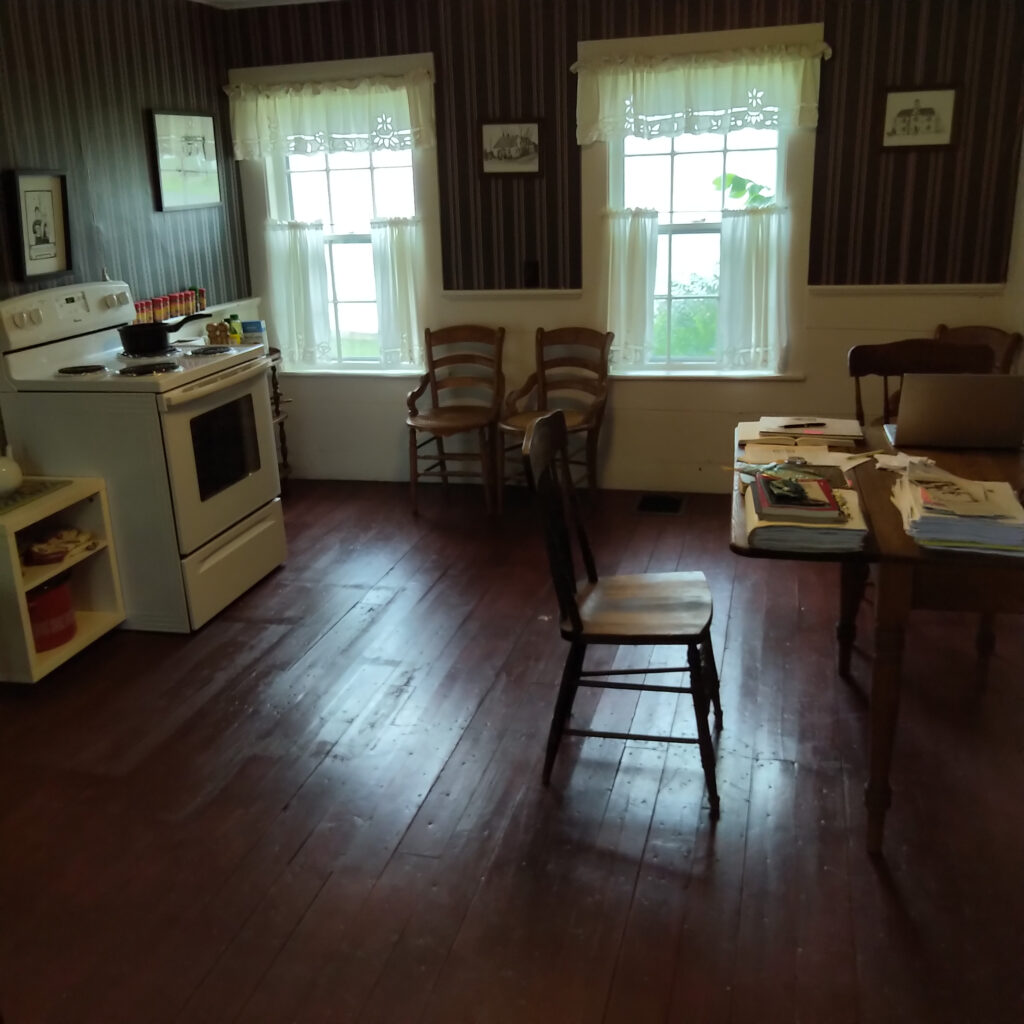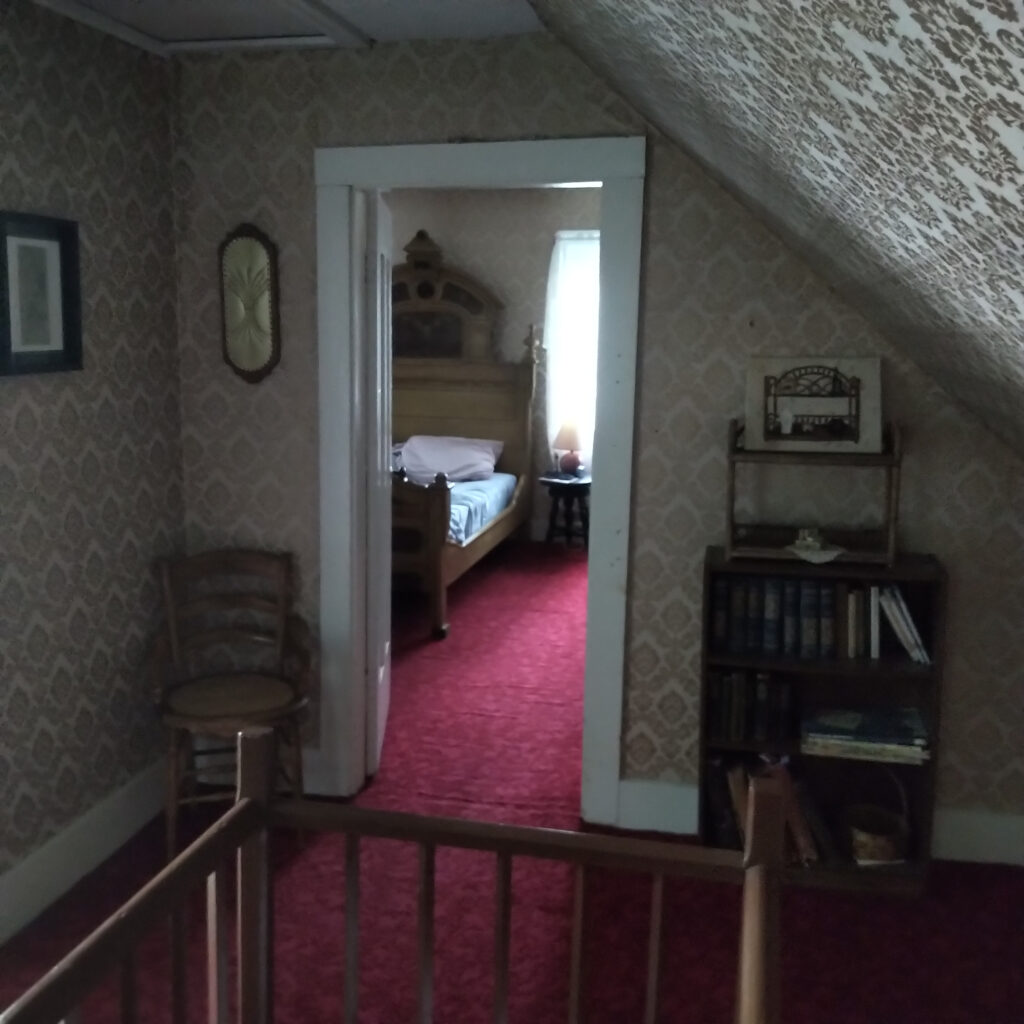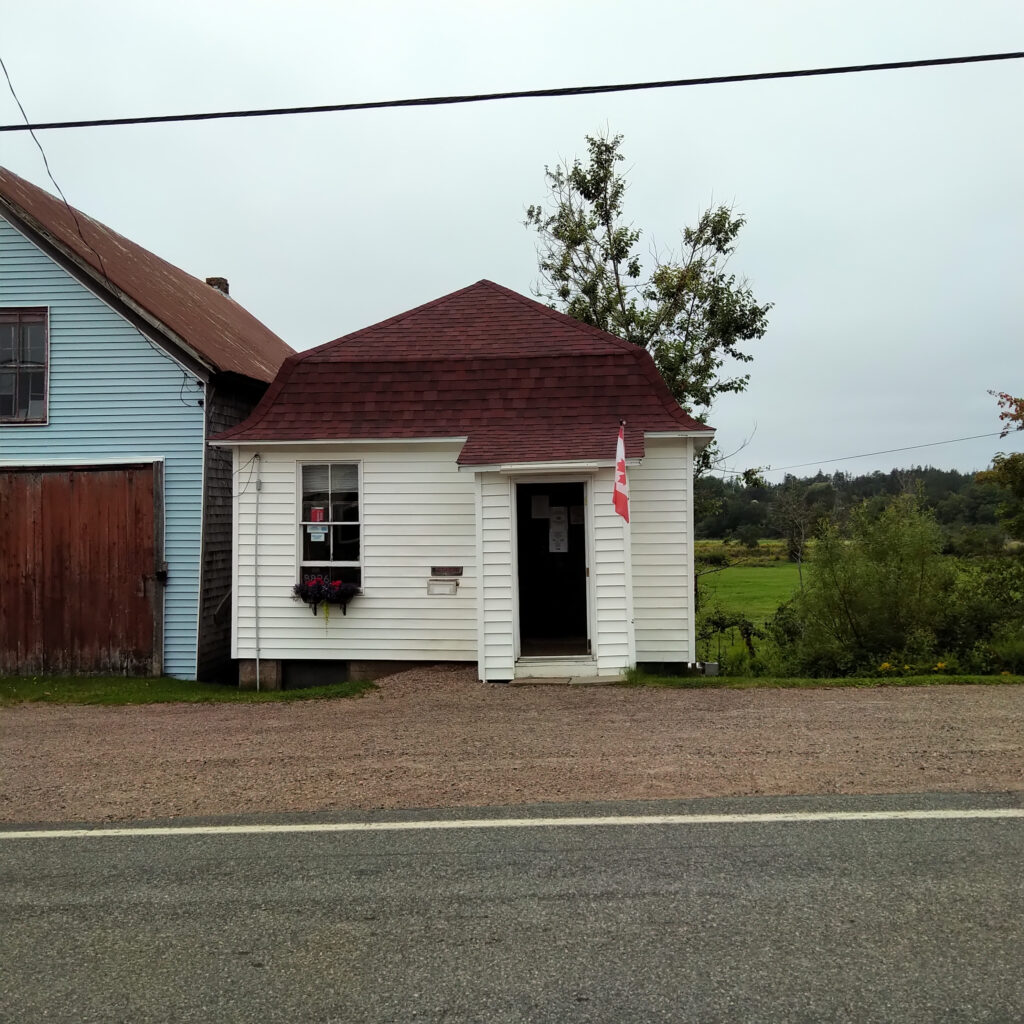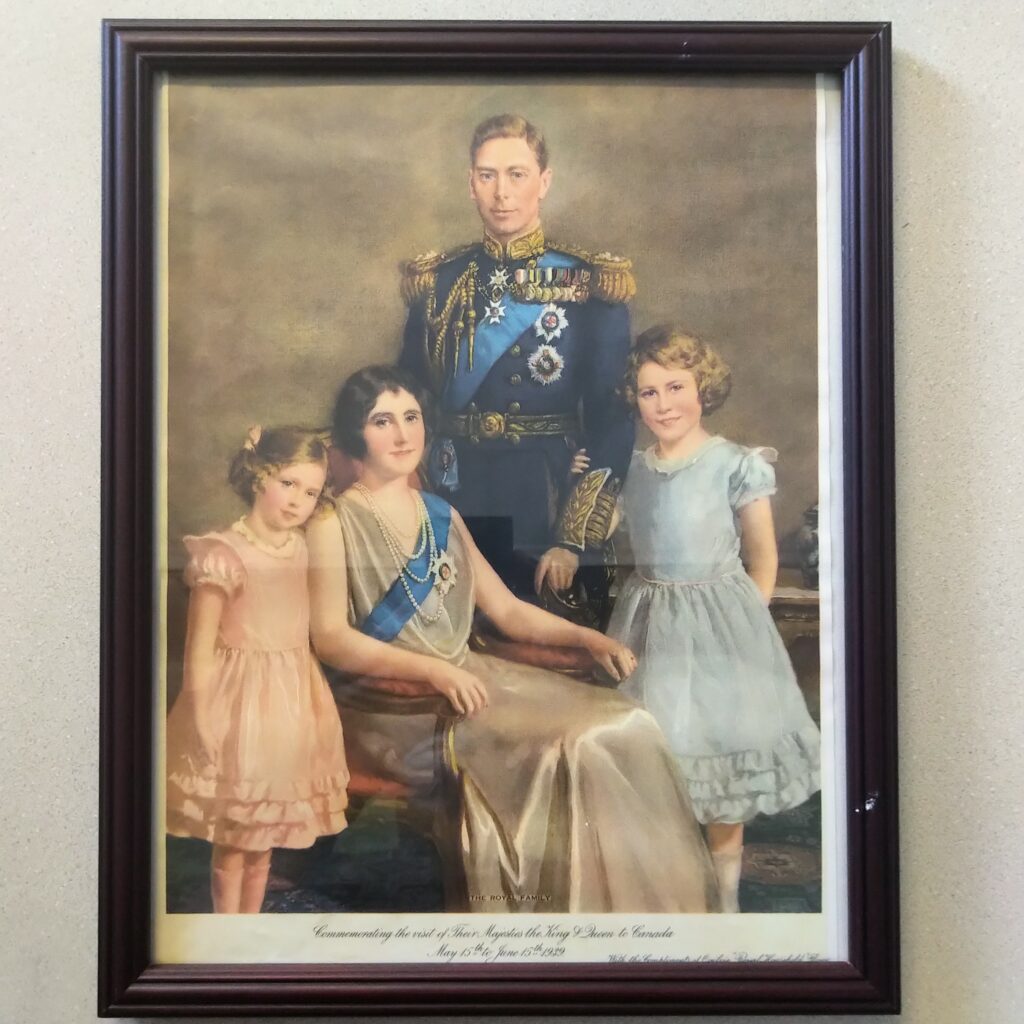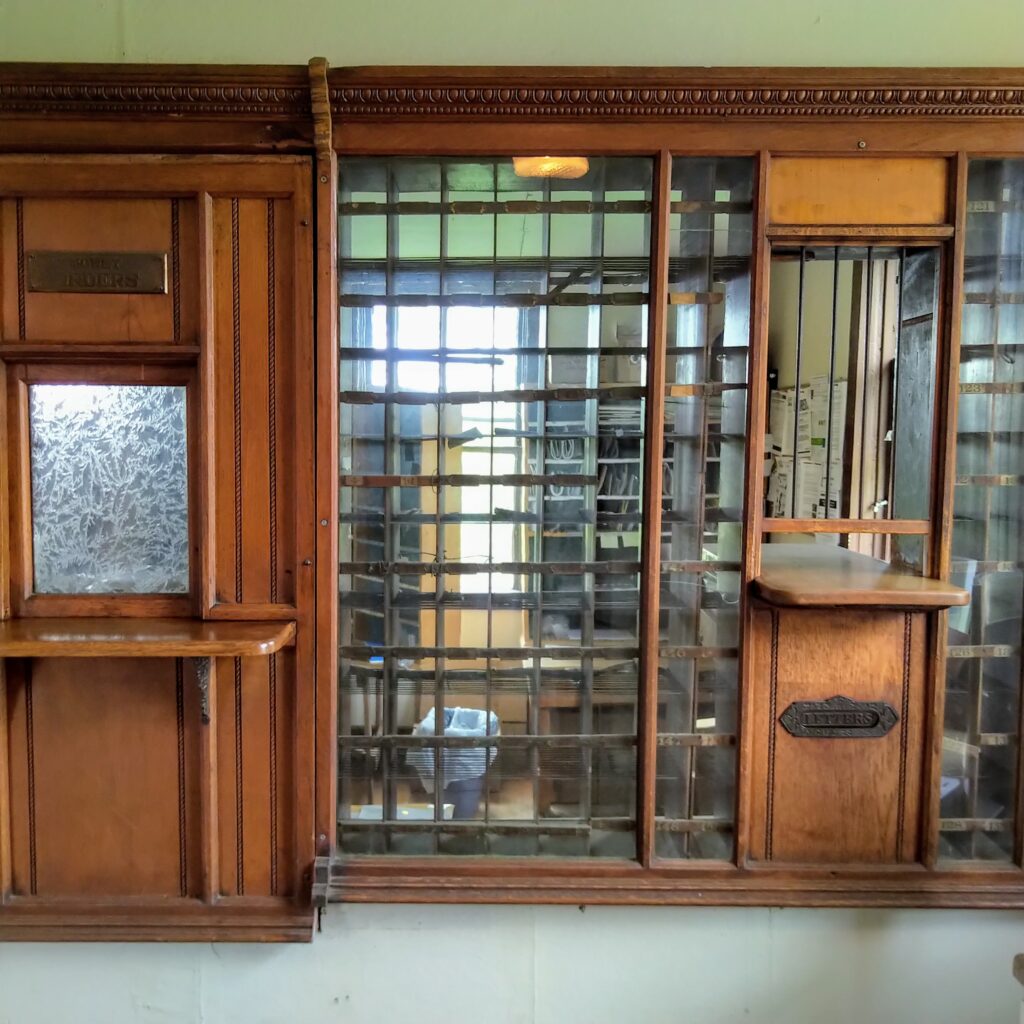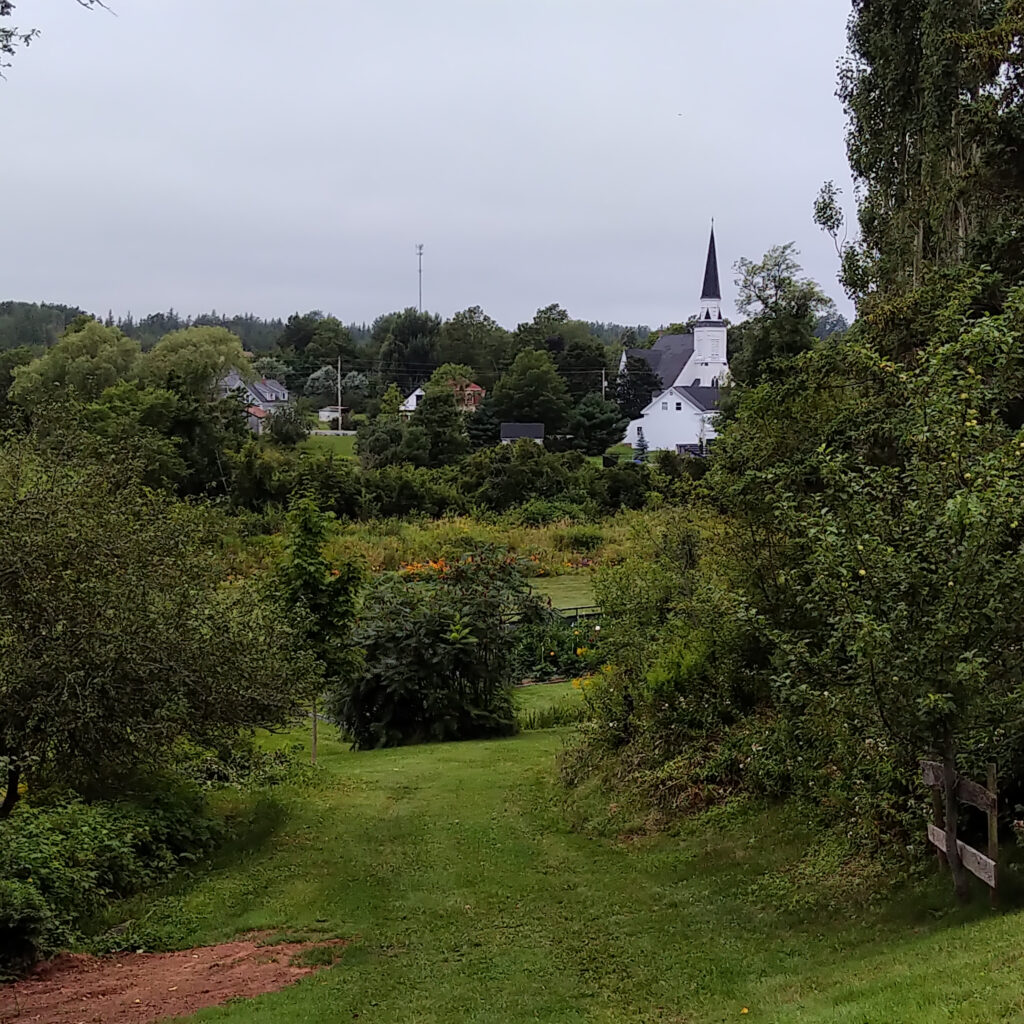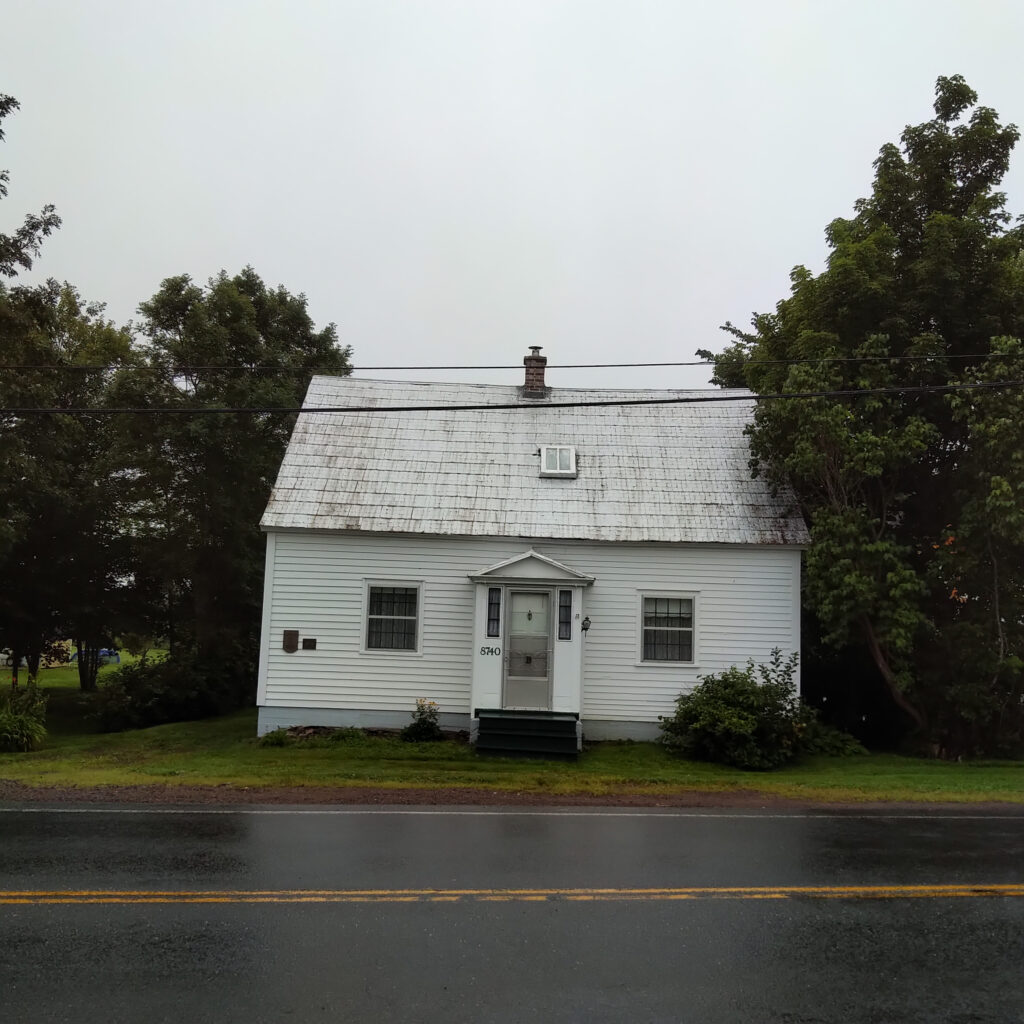New, Tender, Quick: A Visit to the Elizabeth Bishop House
I’ve come to Great Village, Nova Scotia, to visit Elizabeth Bishop’s childhood home and the landscape shown in her great-uncle George Wylie Hutchinson’s untitled, undated little painting on Masonite. This painting is the subject of Bishop’s radiant poem titled, humbly, “Poem,” which appeared in The New Yorker on November 11, 1972. Waking early, I hear chirping northern birds I do not recognize. The elms were long ago dismantled and replaced by sugar maples whose dense crowns offer ample shade. The church bell is silent. The pump organ gathers dust. I see no geese or cows in the village. I picture Bishop’s maternal grandparents, the Bulmers (the l is silent; it’s sometimes spelled Boomer), lying one hundred years ago in the front bedroom under the sloping walls where I sleep now. There are no National Geographics on the shelves. No sewing machine chatters in the kitchen. No odor of coal gas lingers in the much-too-steep stairwell. No caged canary tweets out of loneliness. It is August and delicious blueberries are in season. Local fields are full of ripe corn, the rows of tall stalks running down to the edge of the reddish-brown Cobequid Bay, “home of the long tides / where the bay leaves the sea / twice a day,” long and deep. As I search for sugar in the pantry, cars whiz past the front of the house. Surely Miss Bishop liked sugar in her coffee.
She adored her Aunt Maud, who raised her from age six, after the terrible months of living with her father’s wealthy, unaffectionate parents in Worcester, Massachusetts, where she had been taken against her wishes, “unconsulted,” to be spared a life of “poverty and provincialism, bare feet, suet puddings,” with her mother’s thrifty relatives in Great Village. In Revere, Massachusetts, Maud nursed Bishop’s many childhood afflictions—asthma, eczema, bronchitis. They told one another everything, and there was nothing to criticize about “small, worried, nervous, shy” Maud, who had a pretty alto singing voice. Thereafter, Bishop returned to her grandparents’ rural Nova Scotia home for summer vacations until she began at Vassar.
This house, though, had also been the setting for her mother’s breakdown in 1916, a trauma that marked her. Living and working here, I think often of my own mother, who was put away for a time, like Gertrude Bulmer Bishop. “Pity should begin at home,” Crusoe tells us in Bishop’s great poem “Crusoe in England”: the more pity you feel, the more you feel at home. Yet Bishop’s poems never seem to “tip the scale of being human / By adding unearned weight,” as her friend James Merrill put it in “Overdue Pilgrimage to Nova Scotia,” a poem of commemoration and respect. Beneath the tenderness and control of her poems, there is always turbulence and an unquenchable thirst: “I was terribly thirsty but mama didn’t hear/ me calling her.” Rarely is there someone or something to caress.
I am writing this in the family’s big kitchen, with a pantry and a veranda, four doors and three windows. Long ago, there was a small Marvel woodstove. This was replaced by a vintage Enterprise gas range. Now there is a square, yellow Amana electric stove. Due to the very uneven floor, when I fry eggs they huddle together in one side of the pan. Once an almanac hung from a string. There was always a big teakettle. This is where Bishop learned to walk and where she spent blissful hours with her grandmother: “I can remember this blur of plants and my grandmother holding out her arms.” It is also the setting of her melancholic “Sestina”: “In the failing light, the old grandmother / sits in the kitchen with the child”; “The iron kettle sings on the stove.” One of the poem’s refrain words is tears. The grandmother laughs and tries to hide her tears from the child.
As I write, a soft August rain is falling against the old farmhouse. A thick fog or brume shrouds the fields—meaning there will be snowy days to come this winter. Alas, Uncle Neddy’s roof is leaking and there is a slow drip drip drip from the skylight above Elizabeth’s bedroom. The tin roof is very, very old and needs to be replaced, but we can never replace Uncle Neddy the tinsmith’s workmanship: “He was like a black snail, a rather quick but cautious snail, leaving a silvery, shiny trail of solder.”
It is 1916. Bishop’s favorite room is the parlor where she escapes the busy household, gazing through the square windowpanes at life on the village street. It is a room that feels as though it belongs to her, with oil portraits of her grandmother’s children like calm, dignified playmates, including Gertrude, her mother, solemn and rosy-cheeked, who leans against a round table. Her hair is cropped short with bangs. “Her left leg is crossed over her right one,” Bishop tells us in her story “Memories of Uncle Neddy.” “She must be about nine. She wears a small bustle and a gold brooch” on her dark blue dress. Behind the lace curtains, in a rocking chair, young Elizabeth spends quiet hours looking and looking her “infant sight away.” I know it is sentimental, but I am afraid to sit in this “cold, cold,” low-ceilinged front parlor of the Bulmer house, where Bishop’s young cousin Arthur was laid out in his coffin that resembled “a little frosted cake,” “clutching his tiny lily, / with his eyes shut up so tight.” (“‘Come,’ said my mother, / ‘Come and say good-bye to your little cousin Arthur.’ ”)
I am also afraid of the front bedroom upstairs, for this is where Bishop’s mother’s scream hangs in the shadows, and so many tears that neither time nor I can ever wipe them entirely away: “The scream hangs like that, unheard, in memory—in the past, in the present, and those years between. It was not even loud to begin with, perhaps. It just came there to live, forever—not loud, just alive forever.” I apologize for my weakness, but the poems and stories are so alive to me still.
Each morning, I walk the town road to the little post office, a square building that is shaped like a box of chocolates, but was once a jail. The young postmistress, Charlotte, says hello from behind the counter, and I say hello back from behind my surgical mask. On our second meeting, she tells me she lives in the cute blue house next door. I’m grateful for her forthright Canadian demeanor, since the long confinement has made me shy around strangers. Pondering a commemorative portrait made to mark the king and queen of England’s visit to Canada in 1939, hung high over the door and almost invisible, I buy two Canadian stamps as mementos. It is touching to see the present Queen of England as a child, with her life still before her. She is wearing pale blue, as she often does now, at ninety-six. She, too, will lose a parent. She, too, will face a harshness. She, too, is an Elizabeth. But for this moment, captured in a lithograph, her innocence is preserved.
“Do you know the address of the sanitorium in Dartmouth?” I want to ask Charlotte the postmistress, because it feels as if I have traveled back a hundred years. Each week, a package hand-addressed “in purple indelible pencil,” containing fruitcake, jam, poetry, and chocolates, was sent to Bishop’s mother at the sanitorium near Halifax. Charlotte tells me that the Bulmer (Bishop) mailbox is in the top row, number forty-one (Or is it number fifty-one? Charlotte isn’t sure anymore.) At the front door of the post office, on a little pole, the Canadian flag flaps in a breeze, its bright-red maple leaf coming in and out of focus, opening and closing forever. (“God save our Queen and Heaven bless / the Maple Leaf forever.”) Charlotte tells me that there have not been any visitors to Great Village for two years. I am the first.
Why have I come so far on a literary pilgrimage? I want to be unafraid to move in the world again. But what do I expect from a visit to the three-quarters-Canadian, one-quarter-American poet Elizabeth Bishop’s childhood home? “Should we have stayed at home and thought of here?” Bishop asks in her marvelous poem “Questions of Travel.” Am I, like her, dreaming my dream and having it too? Is it a lack of imagination that brings me to Great Village? “Shouldn’t you have stayed at home and thought of here?” I can hear her asking. I wish my friend Rachel were here as planned. She would know the answers to these questions. She is receiving a new treatment and isn’t herself. In 1979, on the weekend that Bishop died, Rachel knocked on her door at 437 Lewis Wharf—Rachel still lives upstairs—because she knew Bishop wasn’t feeling well, and offered to bring her some milk and eggs from the local market, but Bishop demurred. A couple of days later, Bishop’s friend and companion Alice Methfessel phoned to say that Elizabeth had died and that she didn’t want Rachel to be shocked to read about it in the newspaper.
At the post office, I ask Charlotte about the lovely dahlia garden in the lush green meadow behind the big house, with a wraparound porch, on the bank of the river. Charlotte says the house and the garden belong to Arthur, who is the president of the Great Village Garden Club: “He is retired and would be happy to meet a stranger who loves flowers.” Sometimes people who cultivate flowers do not like humans, I am thinking. “Look, his pickup is in the driveway!” Charlotte exclaims. In the early fifteen hundreds, Spaniards first reported finding dahlias in Mexico. Their blossoms are glorious and Arthur has many varieties: Doris Day, Tiny Treasure, Summit Moonglow, Hollyhill Black Widow, and Frizzy Lizzy. It is a hot and muggy morning. I wish I knew all things dahlia. But I know only a little. Like me, Arthur is perspiring. “Oh, Arthur, they should name a dahlia after Elizabeth Bishop,” I say.
Actually, I have another motive for visiting Arthur’s garden: I want to take a photograph of Great Village from the same perspective shown in George Wylie Hutchinson’s oil sketch. To do this, I must stand on the riverbank in Arthur’s backyard. Hutchinson, Bishop’s great-uncle, came from a poor family. When he was fourteen, he went to sea and worked as a cabin boy. He taught himself to paint and later studied at the Royal Academy. Around 1905, he returned to Nova Scotia in the summer to see his sister Elizabeth—Bishop’s grandmother—and held art classes. Bishop eventually fell heir to the artwork that is the subject of “Poem”: “A sketch done in an hour, ‘in one breath,’/ once taken from a trunk and handed over.” This lovely painting now hangs in my friend Rachel’s apartment at Lewis Wharf, where long ago it hung two floors down in Elizabeth Bishop’s kitchen. Though today there is much more brush growing along the riverbanks, the view of Great Village is the same.
For thirteen thousand years, humans have walked this landscape of Nova Scotia. They once hunted caribou. They made clothing, wigwams, and canoes. They quarried rock and created sharp tools. As a glacier crept down from the highland, the world became colder. These humans are known today as the First Nations people and their descendants. Around the year 1500, Europeans arrived, bringing with them new and deadly illnesses. The next permanent settlers came from France. They farmed the land, built dykes, grew hay for animals, wheat for cooking, and flax for clothing. Because they didn’t swear an allegiance to the Crown, they were expelled and their villages destroyed. The next settlers came north by land from New England and by boat from Northern Ireland to Halifax. At low tide here there is a great expanse of red mud, until the rapid and violent tide of the Bay of Fundy rushes into the narrows again. Fertile marshes line the shore and in summer there is thick fog. It is as if time has stopped or is being measured by the great rise and fall of the deep, long tide.
Eventually, the land along Cobequid Bay was surveyed, lots were assigned, and households grew, despite the hardships. More pioneers followed. The forests that surround Great Village were a resource to the settlers. Using the power of the river, lumbering and shipbuilding brought prosperity. A sign at Wilsons Gas Stops informs visitors about their important local poet: “Home is a central motif in Bishop’s work. She wrote about her childhood home with honesty, eloquence and humour. Her hauntingly unforgettable poetry speaks to the world of her rich Nova Scotian heritage and speaks to Nova Scotians of their ‘earthly trust’ wooden houses, church steeples, wild iris, elms and ancestors.”
Sitting on the back veranda, eating my seafood pie, I imagine again that it is 1916. White hens roam the yard. Little Elizabeth has taken the cow, Nelly, to the pasture. She carries a big stick. At the brook, they both take a drink, and she picks a bunch of mint for her grandmother’s leg of lamb. Elizabeth passes the spot where tall spruce and pine grow at the river’s edge. The water is clear and brown. This is where the church picnic was last summer. There is a freshwater smell. Elizabeth nuzzles Nelly and lets her lick her face. She is a Jersey. Very pretty with dark brown eyes. Later Elizabeth will go to the cemetery with her grandfather, who carries a scythe to trim the grass around the headstones of their kin. She will pick blueberries and caress the recumbent lamb made of stone that marks a child’s grave. She’ll sit on the lamb and talk to it. The cemetery is on a high bank above the water that is sometimes a dreamy lavender. Today she doesn’t feel so desultory about death. She loves her grandfather in his straw hat. Bees visit the foxgloves. On the way home they might stop at Nate’s shop with the beautiful sounds and the horse-manure odors. At home she’ll wash her face and hands with icy well water. Her grandmother will sing a Baptist hymn, if she asks. In her little room with a skylight (long before skylights were common in such houses), at the top of the steep and narrow stairs, she’ll say her prayers. Embracing her grandmother, she’ll notice how the lamplight makes everything shimmer.
Henri Cole was born in Fukuoka, Japan. He has published ten collections of poetry, most recently Blizzard, and a memoir, Orphic Paris. A selected sonnets is forthcoming.
Copyright
© The Paris Review


